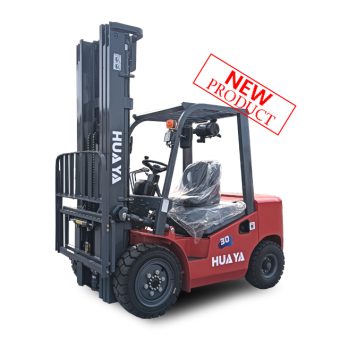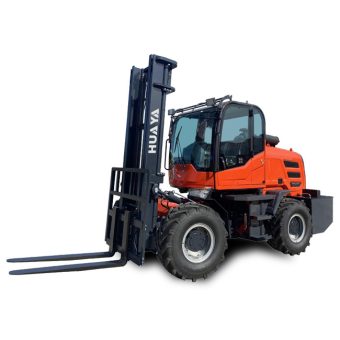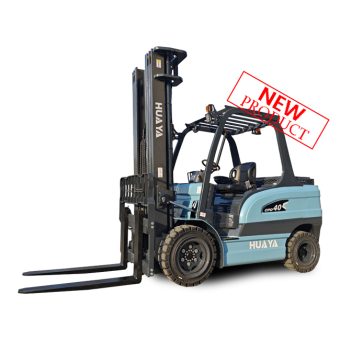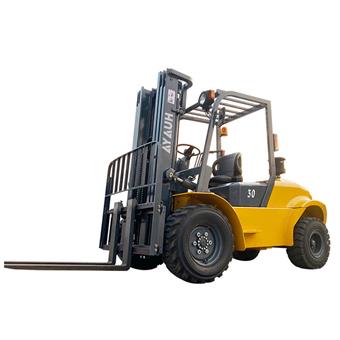
Noticias
Cuando se trata de levantar y mover cargas pesadas, las carretillas elevadoras son las máquinas a las que recurren los almacenes, las obras de construcción y las instalaciones industriales. Pero no todas las carretillas elevadoras son iguales, y entender las diferencias entre una carretilla elevadora estándar y una carretilla elevadora para terrenos difíciles puede ahorrarle tiempo, dinero y frustración.

La carretilla elevadora clásica es como el sedán fiable del mundo de la manipulación de materiales. Está construida para ser eficiente en superficies planas y estables, como suelos de almacenes, fábricas o patios de almacenamiento pavimentados. Esto es lo que la hace destacar:
Las carretillas elevadoras estándar son compactas y maniobrables, lo que las hace perfectas para desplazarse por espacios reducidos. Con una distancia al suelo relativamente baja, estas máquinas destacan en interiores o en entornos controlados donde el terreno es predecible.
Los neumáticos de una carretilla elevadora estándar suelen ser de caucho macizo o neumáticos acolchados. Ofrecen una tracción excelente en superficies lisas, pero no están diseñadas para terrenos accidentados o irregulares.
Aunque son versátiles en muchos escenarios, las carretillas elevadoras estándar suelen tener capacidades de elevación inferiores en comparación con sus homólogas para terrenos difíciles. Son ideales para mover palés, cajas y materiales dentro de almacenes o en camiones de reparto.
Si la carretilla elevadora estándar es la berlina, la carretilla elevadora todoterreno es el todoterreno robusto. Está diseñada para enfrentarse a entornos exteriores difíciles, desde obras embarradas a campos rocosos. He aquí por qué supone un cambio de juego para el trabajo en exteriores:
Estas carretillas elevadoras están construidas para resistir, con bastidores reforzados y una mayor distancia al suelo. Esto les permite atravesar terrenos irregulares y llenos de baches con facilidad.
Equipadas con ruedas neumáticas o rellenas de espuma, las carretillas elevadoras para terrenos difíciles pueden agarrarse a superficies sueltas como tierra, grava o arena. El mayor tamaño de los neumáticos y su robusta construcción también contribuyen a una conducción más suave.
La mayoría de las carretillas elevadoras para terrenos difíciles están propulsadas por motores diésel, lo que les confiere la fuerza necesaria para transportar cargas más pesadas en distancias más largas. También están equipadas para soportar condiciones meteorológicas extremas.
La seguridad es una prioridad cuando se trabaja en terrenos irregulares. Las carretillas elevadoras para terrenos accidentados suelen incorporar estabilizadores o sistemas de tracción a las cuatro ruedas para mantener las operaciones seguras y estables.
Comparémoslos rápidamente:
| Característica | Carretilla elevadora estándar | Carretillas elevadoras todo terreno |
| Terreno | Superficies lisas y planas | Terrenos irregulares y accidentados |
| Neumáticos | Neumáticos amortiguados o macizos | Ruedas neumáticas o rellenas de espuma |
| Fuente de energía | Electricidad o gas | Diesel |
| Distancia al suelo | Bajo | Alta |
| Uso típico | Manipulación de materiales en interiores | Construcción al aire libre, agricultura |
Su elección depende totalmente del trabajo que tenga entre manos. Si su trabajo gira en torno a tareas en interiores, pasillos estrechos y entornos controlados, la carretilla elevadora estándar será su mejor opción. Por otro lado, si se enfrenta a elementos exteriores, terrenos abruptos y cargas pesadas, la carretilla elevadora para terrenos difíciles será su héroe.
Comprender la diferencia entre estos dos tipos de carretillas elevadoras es crucial para la eficacia y la seguridad en el trabajo. La máquina adecuada no sólo le ahorrará tiempo y esfuerzo, sino que también reducirá el desgaste de su equipo. Tanto si levanta palés en un almacén como si se desplaza por una obra embarrada, hay una carretilla perfectamente adaptada a sus necesidades.



